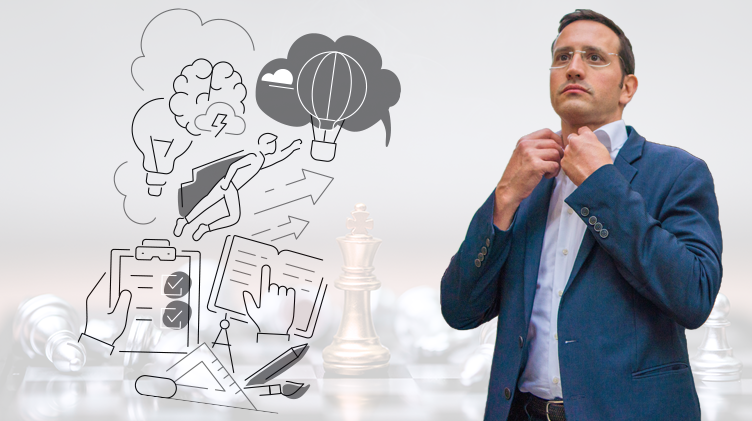At the core of innovation lies a crucial skill – the ability to formulate an effective challenge. The essence of breakthroughs in business, technology, science, and public policy is a well-defined, targeted challenge that captures the problem and opportunity at hand. This comprehensive guide delves deep into the art and science of formulating an effective challenge – a foundational pillar of the innovation process.


Understanding the Importance of Formulating an Effective Challenge
The Heart of Innovation
Formulating a meaningful challenge is a pivotal aspect of innovation. A challenge in this context represents the crux of the problem or opportunity that demands innovative solutions. Defining an effective challenge is akin to laying down a clear roadmap, directing your efforts towards a purposeful end-goal. By doing this, organizations and individuals can channel their creativity in a focused manner, ensuring the resultant innovation is relevant and impactful.
Decision-Making: Shaping Choices
The way we craft a challenge has a profound impact on the decision-making process. A well-defined challenge outlines the parameters of the solution space, delineates the criteria for success, and shapes the strategies for problem-solving. By defining the what, why, and who of the challenge, we can formulate an informed approach to deciding the how, enhancing the efficiency and effectiveness of our decision-making.
Steps to Formulate an Effective Challenge
Formulating a challenge is a process that requires methodical planning and strategic thinking. Here are the steps to navigate this process:
Identifying the Problem or Opportunity
The first step to formulating an effective challenge is identifying the problem or opportunity that necessitates innovation. This step involves a comprehensive understanding of the situation, the stakeholders involved, and the underlying issues or potential areas for growth. This understanding should not only consider the present state of affairs but also anticipate future scenarios, ensuring the challenge stays relevant over time.
Define Your Objectives
Once you’ve identified the problem or opportunity, the next step is to clearly articulate your objectives. Your objectives should align with your organization’s broader goals and values, providing a solid foundation for your innovative efforts. They should be SMART – Specific, Measurable, Achievable, Relevant, and Time-bound – to ensure clarity, focus, and trackability.
Gather Information
To formulate an effective challenge, you need to gather as much relevant information as possible. This includes understanding the market dynamics, getting insights from end-users, studying competitors, and more. Data is a powerful tool in challenge formulation. It helps you develop a thorough understanding of the problem space, ensuring your challenge is grounded in reality and addresses the right issues.


Frame Your Challenge
Framing your challenge involves translating your understanding of the problem or opportunity and your objectives into a clear, concise statement that motivates and guides your innovation efforts. The framing should be open-ended enough to encourage diverse, creative solutions, yet focused enough to provide clear direction. It should not prescribe a specific solution but describe the desired outcome in a way that stimulates innovative thinking.
Techniques to Improve the Formulation of Challenges
Just like any other skill, formulating an effective challenge can be enhanced with the right techniques. Here are a few that can help improve your process:
5 Whys Technique
The 5 Whys technique, a powerful tool for root cause analysis, can be instrumental in formulating an effective challenge. By repeatedly asking ‘why’, you can peel away the superficial layers of a problem, revealing the underlying cause that needs addressing. This approach ensures that your challenge targets the core issue, maximizing the impact of your innovation.
SWOT Analysis
The SWOT (Strengths, Weaknesses, Opportunities, Threats) Analysis is a strategic planning tool that can provide valuable insights when formulating a challenge. By understanding your strengths and weaknesses (internal factors) and opportunities and threats (external factors), you can craft a challenge that is aligned with your capabilities and the external environment.
Stakeholder Analysis
Understanding the needs and interests of all stakeholders is crucial to formulating an effective challenge. A stakeholder analysis helps you identify who has a stake in the solution, their needs, concerns, and how they might influence or be influenced by the challenge and its solution. This ensures your challenge is relevant, inclusive, and aligns with the expectations of all parties involved.
Reframing
Sometimes, the initial framing of the challenge may not yield the desired outcomes. In such situations, reframing can provide a fresh perspective, uncovering new dimensions of the problem or opportunity. This involves challenging initial assumptions, exploring alternative viewpoints, and shifting the focus or scope of the challenge. Reframing encourages you to think outside the box, stimulating innovative solutions that might not have been considered under the original frame.
Journey Through the Legacy of “Formulate-E Challenge” Luminaries
Several masterminds have left indelible marks on the annals of innovation through their ability to formulate riveting challenges. Their lives and work serve as a guiding light for every innovator out there.


Thomas Edison
Widely acclaimed as the “father of modern innovation,” Thomas Edison is an exemplar of formulating challenges that inspire ingenuity. His revolutionary development of a practical electric light system showcases his flair for delineating clear, specific challenges and driving innovative solutions. This invention was not a mere stroke of genius; it was the outcome of Edison’s meticulously crafted challenge aimed at illuminating homes and cities worldwide, transforming lifestyles, and powering industries.


Elon Musk
Elon Musk’s influence on the innovation landscape of the 21st century is undeniable. Renowned for his audacious goals and monumental challenges – spanning from sustainable energy to Mars colonization – Musk has instigated groundbreaking advancements across multiple fields. Whether it’s revolutionizing the automobile industry with electric vehicles (Tesla), transforming space travel (SpaceX), or envisioning futuristic transportation systems (The Boring Company and Hyperloop), Musk’s formidable ability to define and tackle enormous challenges is awe-inspiring.


Steve Jobs
Steve Jobs, co-founder of Apple Inc., has a legacy deeply embedded in the ethos of innovation. His exceptional knack for framing challenges that harmonize technology with aesthetics led to a series of iconic products, including the iPhone. Jobs didn’t just strive for technical advancement; his challenges encompassed a grand vision of enriching human experiences through intuitive, aesthetically pleasing technology, thereby reshaping the landscape of personal computing and mobile devices.


Grace Hopper
Grace Hopper, an unheralded trailblazer in computer programming, was adept at formulating challenges that spurred significant advancements in the realm of software. Hopper envisioned a future where programming languages would be easy to use and understand, a radical concept at a time when programming was a highly specialized skill. This challenge led to the development of COBOL, one of the first high-level programming languages. Her work laid the groundwork for the modern software industry and stands as a testament to how a well-articulated challenge can lead to profound innovation.


Tim Berners-Lee
Tim Berners-Lee, the father of the World Wide Web, exhibited a keen understanding of challenge formulation. In a world where computers were largely isolated, Berners-Lee envisioned a system that would enable global information sharing. This challenge was the impetus for the creation of the World Wide Web, a feat that revolutionized information accessibility and communication, bridging gaps and fostering unprecedented global connectedness.
Unearthing Lessons from these Innovation Titans
The stories of these innovation juggernauts shed light on several important lessons in formulating an effective challenge:
The Audacity of Vision
Each of these luminaries is known for their daring and bold vision. They did not confine their challenges to incremental improvements; instead, they aimed at bringing about radical changes that would disrupt entire industries or even reshape society. This audacity to think big and aim high has often been the defining feature of their challenges and the subsequent innovations.
A Strong User-Centric Approach
All these visionaries shared a common trait – a deep-rooted focus on understanding and meeting user needs. This user-centric approach ensured that the resultant innovations were not only technologically advanced but also offered tangible value to end-users. They saw beyond the technology, ensuring their innovations had the human element, thus making them more accepted and successful.
Persistence Amidst Adversity
Another invaluable lesson from these innovators is the importance of persistence. Innovation is often fraught with challenges, obstacles, and setbacks. However, remaining committed to the challenge and pursuing it relentlessly can lead to breakthroughs that shape history.
Fostering a Collaborative Innovation Culture
Finally, these leaders understood that innovation doesn’t occur in isolation. They embraced diverse perspectives, fostered a culture of open dialogue and risk-taking, and promoted collaborative problem-solving. They leveraged the collective intelligence of their teams to navigate through the challenges they formulated, thus fostering a healthy, innovation-driven culture.


Conclusion
In the grand scheme of innovation, formulating an effective challenge plays a pivotal role. It guides the direction of creative efforts, shapes the decision-making process, and influences the effectiveness of the resultant innovation. Understanding this process, its significance, and the techniques to master it, can empower organizations and individuals alike in their pursuit of innovation. Through this in-depth guide to challenge formulation, we hope to inspire and equip innovators to redefine challenges and transform them into opportunities for groundbreaking solutions.



